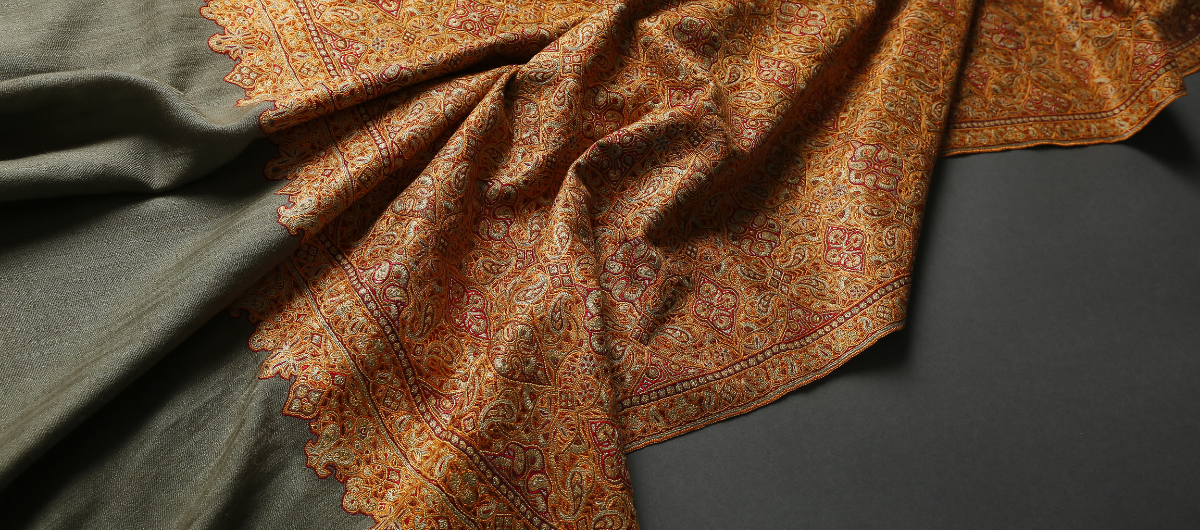
Authentic Shawls
A true Kashmiri pashmina shawl is made from the fine, hand-spun wool of the Changthangi goat and handwoven by artisans in Kashmir. These luxurious shawls are known for their unparalleled softness, warmth, and intricate designs, such as Kani and Sozni embroidery. Due to the delicate nature of the fibers, real pashminas command a higher price than imitations or blends.
How to spot a genuine pashmina
Counterfeit pashminas are common, so it is important to be able to identify an authentic piece.
- The GI Tag: Look for the Geographical Indication (GI) tag, the most reliable sign of a real Kashmiri pashmina.
- Handwoven Weave: True pashmina is handwoven, so it will have slight inconsistencies or irregularities in the weave, unlike the machine-perfect weave of imitation products. You can hold it up to the light to inspect the weave.
- The Burn Test: Carefully burn a single fringe thread. A real pashmina will smell like burnt hair and turn to powder, while a fake will melt like plastic.
- Softness and Feel: A genuine pashmina is incredibly soft and warm but not slippery smooth. Some synthetic blends feel deceptively soft, but a real one will also feel airy and delicate.
- Weight and Warmth: Real pashmina is lightweight yet provides exceptional warmth due to its fine fibers.
Caring for your pashmina shawl
Proper care is essential to preserve the delicate fibers and intricate artistry of a pashmina shawl.
- Washing: It is generally recommended to dry clean pashmina, especially embroidered pieces. If handwashing, use cold or lukewarm water with a mild detergent specifically for wool or a baby shampoo. Do not twist or wring the shawl.
- Drying: After washing, gently squeeze out excess water. Never hang the shawl to dry, as it can stretch out of shape. Instead, lay it flat on a clean towel. Keep it out of direct sunlight.
- Storage: Always fold and stack your pashmina rather than hanging it. Store it in a clean, dry place away from direct sunlight. To protect it from moths, avoid using naphthalene balls or wrapping it in newspaper.
- Rest: Giving your shawl a rest for a couple of days after each wear helps the fibers relax and regain their shape.